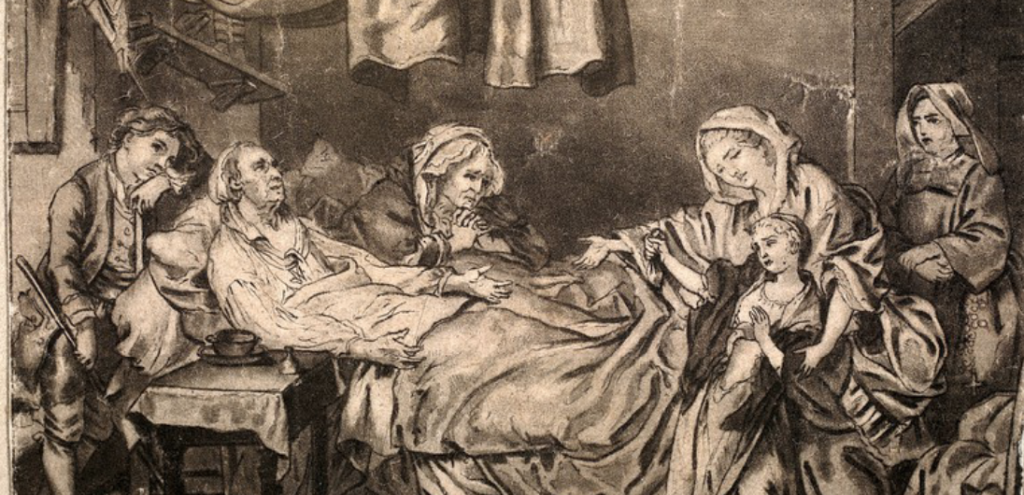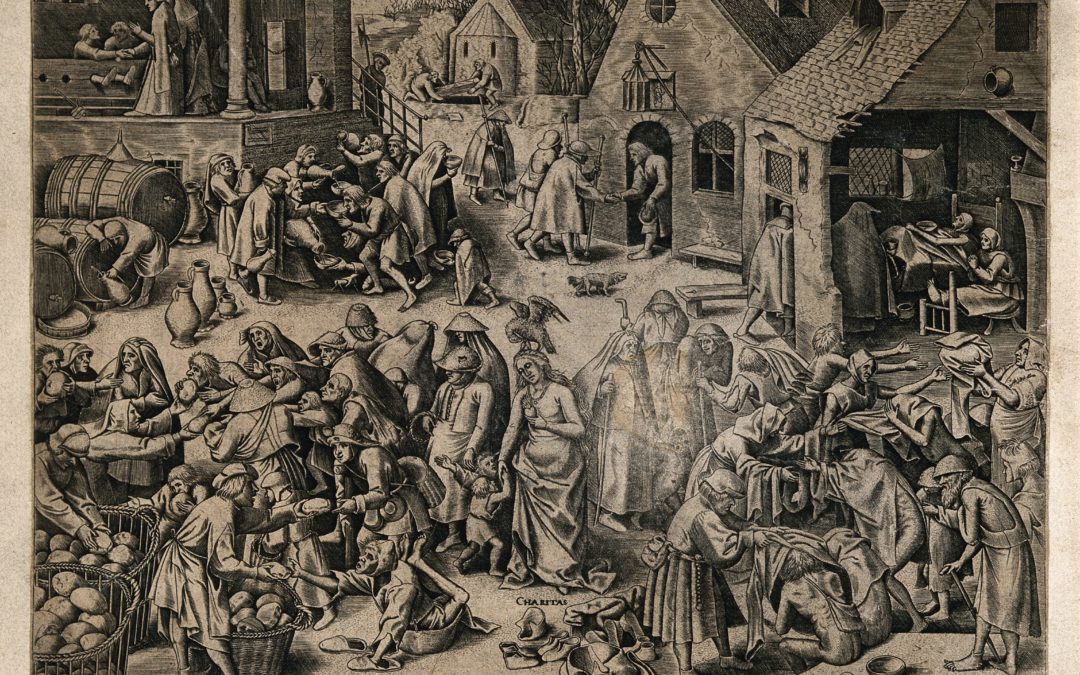by Jonathan Healey
How important were kinship ties in the support of the English poor? In this post Jonathan Healey introduces his new article – ‘Kin support and the English poor: evidence from Lancashire, c.1620–1710’ – published in the May 2019 issue of the IHR’s journal, Historical Research. Jonathan’s article uses a largely untapped set of sources, pauper petitions, to look for qualitative evidence of kinship support. This, he argues, was not uncommon. But kin support also had its limitations, and might only be a temporary expedient.
In 1662, Thomas Nailor of Standish petitioned for poor relief. He was, he said, about 70 years old and had ‘formerly lived in good and credible condition’, but for four years he’d been struck with a horrific sickness. All his goods were spent, and even his bed had rotted away beneath him. He had nothing to live on, ‘but what pitiful neighbours have sent him’.
Now, though, ‘none are willing to be troubled to look to him and help him’, thanks, he said, to his ‘loathsome condition’. None, that was, except ‘only a kinswoman of his’ who, ‘out of natural affection’, had ‘thus far been with him’. But she was poor herself, and ‘grieving to see his daily misery is discouraged and almost wearied out’. So, as a last resort, he called on his township for relief.
To us, it doesn’t seem especially surprising that someone suffering such deep hardship as Thomas Nailor would turn to their relatives to support them. We still tend to see early modern rural communities as slow-changing, static, even isolated.
The work of the ‘new social historians’ of the 1960s and ‘70s – scholars like Keith Wrightson and Alan Macfarlane – challenged this. They showed that early modern rural communities were far from immobile, unchanging. People moved all the time, sometimes far away from their relatives. Crucially, when they married they moved out of their parents’ homes and set up in their own. The ‘normal’ household just comprised a married couple, their children, and perhaps a servant.
It was a view that tended to minimise the role of kin in the daily lives of ordinary English folk, but this isolationist view has been extensively revised since these classic studies were published. Work, for example, by Miranda Chaytor and Naomi Tadmor has argued that whilst people didn’t tend to live with their relatives, they nonetheless often maintained contact. Kinship relations were fleeting, but important. You might not hear from relatives for some time, but when you really needed them, they were there. They helped out in times of financial, personal and emotional need.

Of course, these arguments are crucial too for historians of poverty. Peter Laslett’s well known ‘nuclear hardship hypothesis’, for example, suggested that isolation from relatives placed the burden of care for the elderly and the vulnerable on the ‘collectivity’. To Laslett, this helps explain why England needed a tax-funded system of support for the poor in the form of its Elizabethan poor laws.
And yet, historians of poverty have come to realise that the poor lived in what Olwen Hufton so evocatively called an ‘economy of makeshifts’. They were never (or very rarely) dependent on formal poor relief alone: they scrimped, saved, begged, borrowed, even stole, to make ends meet; hoping to stave off that day when, like Thomas Nailor, they had to call on the parish overseer and ask for a dole.
Such strategies of ‘making shift’ are astonishingly hard for historians to recover. Whilst, in theory, every dole received from the parish was meticulously written down in the annual overseers’ accounts, the little things the poor themselves did to avoid those doles were almost never recorded.
This is why surviving petitions like Nailor’s are so important.
Generally, petitioners had asked their parish, who had given them the cold shoulder, so they were appealing to the magistrates, whose role was to oversee the overseers. They were expected to describe why they had come to need relief. Usually this meant describing how crippling old age or sickness meant that they could no longer work, or how the death of a husband or the sickness of a child had perilously unbalanced the family economy. They are vivid, invariably moving, tales of hardship in a world of uncertainties, written (often by a kindly neighbour) so as to elicit sympathy from the magistrates and to encourage them to force open the parish purse.
Sometimes, though, they said more. Crucially, petitioners sometimes described how they had previously ‘made shift’, but now – through misfortune – could no longer do so. They told of kindly neighbours who could aid no more; of goods – ‘bedclothes and back clothes’ – sold, of cows that had died and of charity grown cold. And they told of help by relatives. In fact, petitions like this offer one of the few sources in which the poor themselves describe how they turned to relatives for support.
When James Byrom of Hundersfield found the wool trade on which he depended decayed, he petitioned that he and his family would have been ‘enforced to have turned vagrant or otherwise to have starved’, had not ‘his aged father commiserated his condition, and overcharged himself in relieving their wants’.
Lettice Gleast of Fazakerly told in 1661 of how she was 72, blind, and her husband had run away to escape his creditors. She wasn’t even able to crave relief from her neighbours, but a grandchild ‘doth daily beg for her relief’. In 1652, 80-year-old Alice Blacoe of Lydiate told magistrates that she was ‘not able to go to any neighbours’ house by reason of her impotency’, but that her daughter had ‘laboured in the country for her relief’.
Such statements are fleeting. I’ve studied several thousand petitions for the county of Lancashire: of just over 3,000 first petitions, only 118 contain clear evidence of support by relatives.

Jonathan Healey is Associate Professor in Social History at the University of Oxford’s Department for Continuing Education, where he directs two undergraduate programs in local history. His book, The First Century of Welfare: Poverty and Poor Relief in Lancashire, 1620-1730 was published in 2014. His latest article, ‘Kin support and the English poor: evidence from Lancashire, c.1620–1710’, appears in the May 2019 issue of Historical Research.
Cover image: Wellcome images

